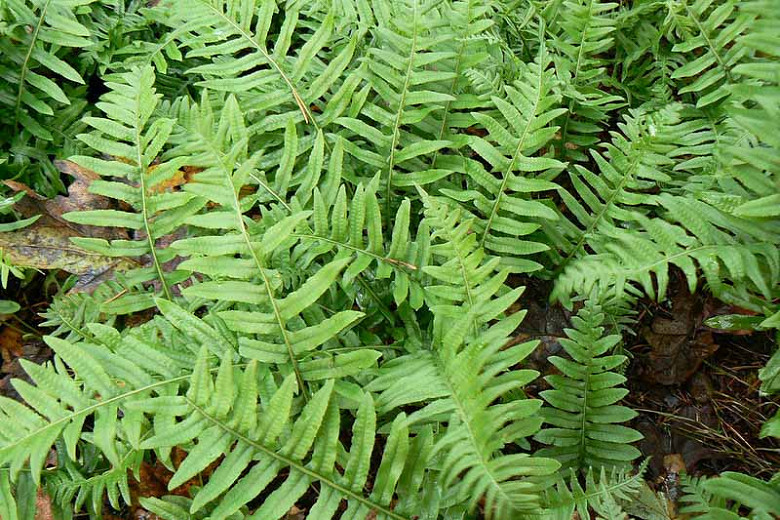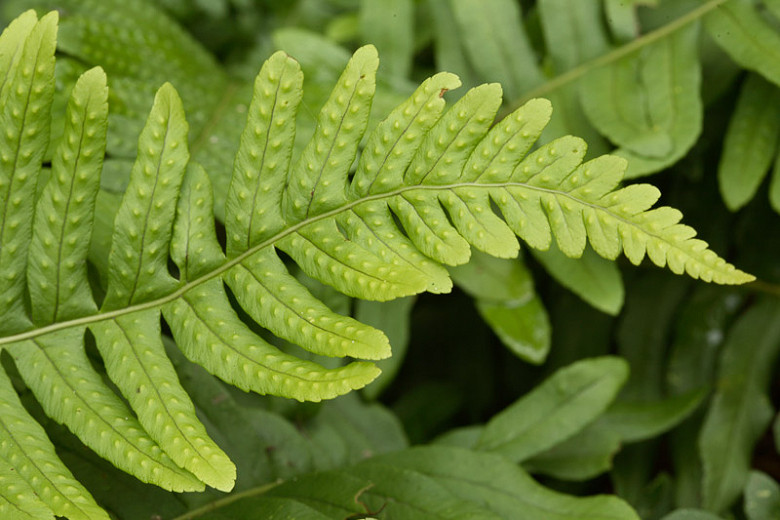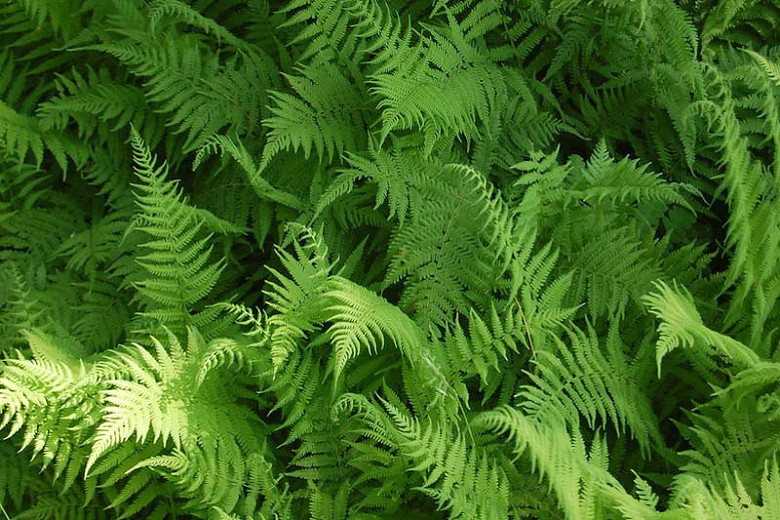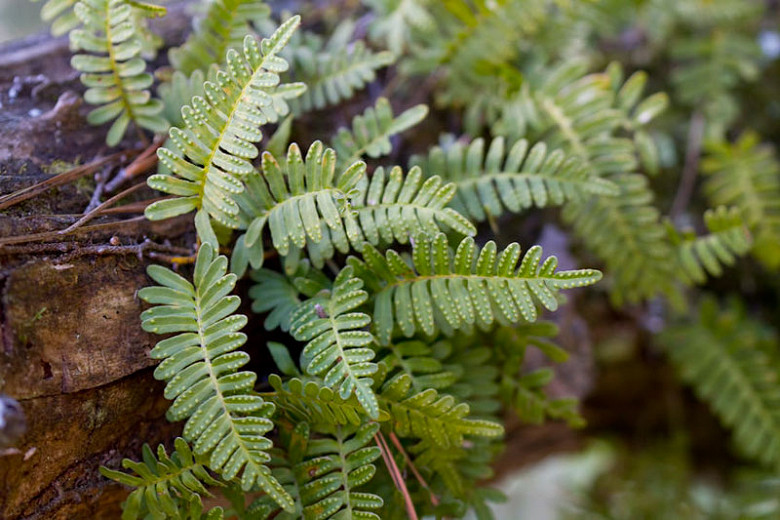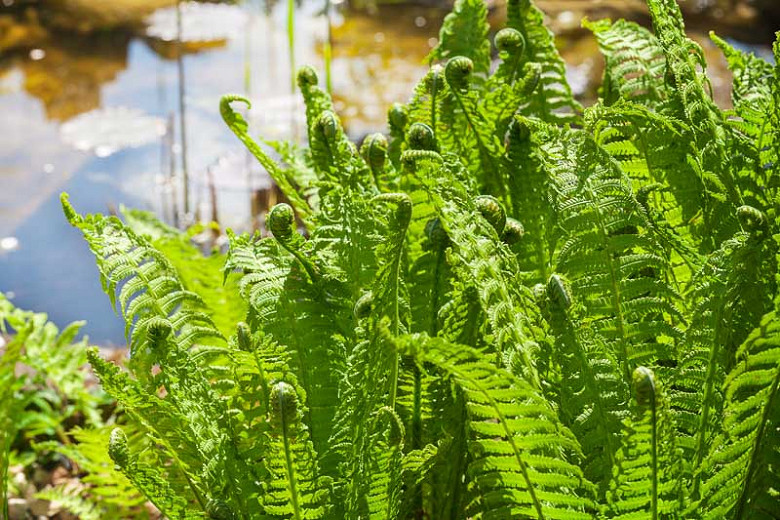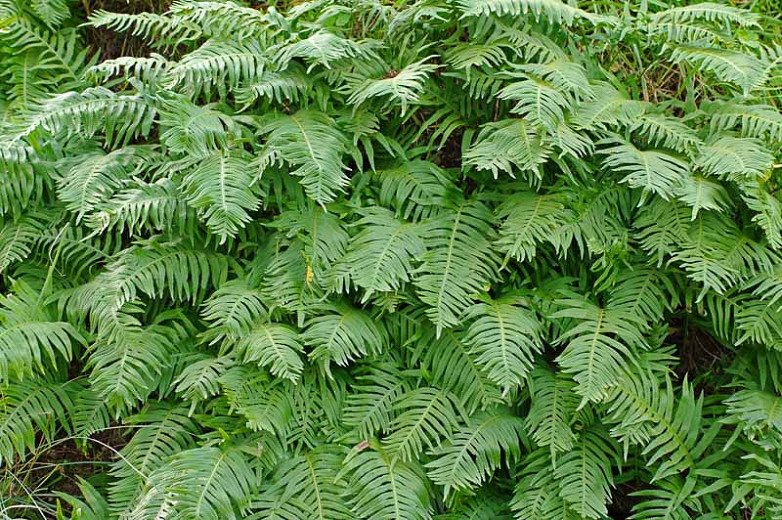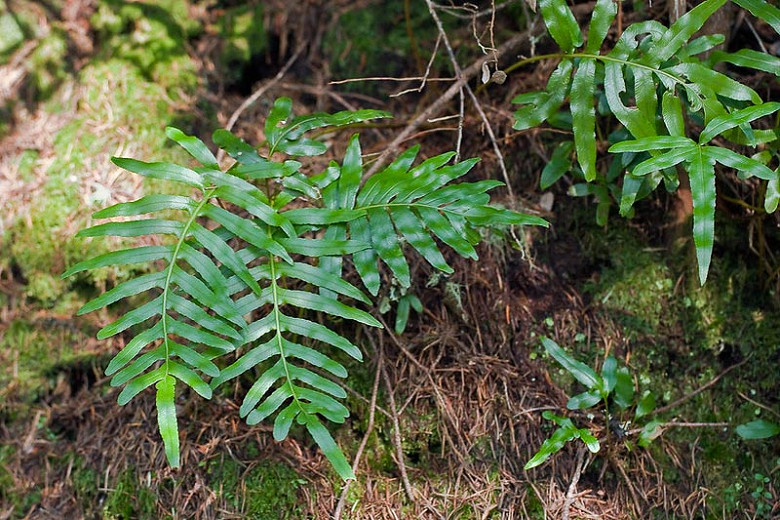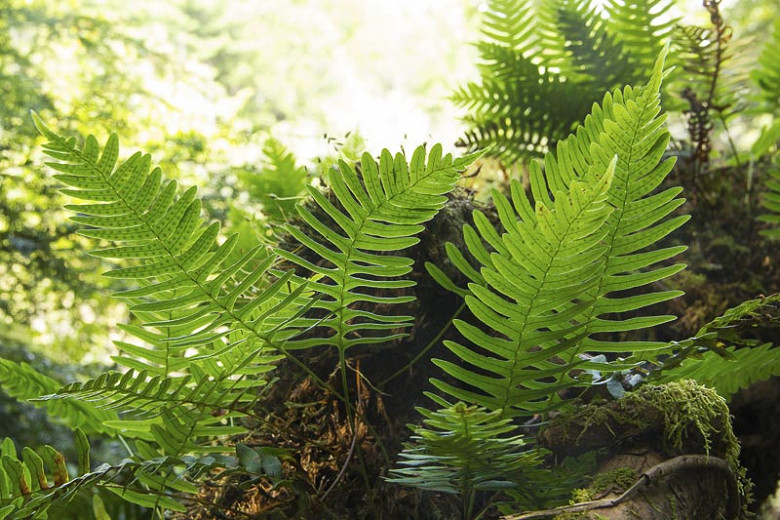Polypodium glycyrrhiza (Licorice Fern)
Native of coastal regions from Alaska to California, Polypodium glycyrrhiza (Licorice Fern) is a semi-evergreen fern forming attractive mats of gracefully arching, triangular, dark green fronds, 10-12 in. long (25-30 cm). The leaves are only once pinnately divided, each leaflet with pointed tips and finely scalloped or toothed margins. Spores are located in round brownish sori on the undersides of the fronds, and are released in cool weather and high humidity. The fronds arise from a licorice-flavored reddish rhizome which was chewed for flavor by many Native Americans. The rhizome was also used as a remedy against colds, coughs, and sore throats. Licorice Fern is commonly found as an epiphyte on winter deciduous trees, although it does also grow on logs, rocks, and the ground as a spreading ground cover. Remaining lush and fresh-looking from fall to spring, Licorice Fern is a summer deciduous fern and dies back to the ground in the dry season. In areas with cool and moist summers and warm and wet winters, it may stay evergreen. Licorice Fern spreads slowly by creeping rhizomes to form a lovely colony. Undemanding, adding charm and personality to gardens, it is often used in moist rock gardens. Perfect for the woodland garden or shady beds.
- Grows up to 6-12 in. tall (15-30 cm).
- A part shade to full shade lover, it is best grown in well-drained soils. Tolerates a wide variety of soils as long as adequate moisture is present. Will grow in full sun if given plenty of moisture. Tolerant of dry shade but water regularly in the first season and mulch well. This summer dormant fern does not need summer watering.
- This plant is a great choice for shady beds and borders, underplanting of roses and shrubs, cottage gardens, rock gardens or woodland gardens.
- Virtually pest and disease free. Rarely if ever troubled by browsing deer.
- Dead or damaged fronds may be removed as necessary.
- Propagate by spores or by division in spring or early summer.
- Native to western North America.
Requirements
| Hardiness | 4 – 9 |
|---|---|
| Heat Zones | 1 – 9 |
| Climate Zones | 4, 5, 6, 14, 15, 16, 17, 18, 19, 20, 21, 22, 23, 24, A3 |
| Plant Type | Ferns |
| Plant Family | Polypodium – Ferns |
| Exposure | Partial Sun, Shade |
| Season of Interest | Spring (Early,Mid,Late)FallWinter |
| Height | 6" – 1' (15cm – 30cm) |
| Water Needs | Average |
| Maintenance | Low |
| Soil Type | Chalk, Loam, Sand |
| Soil pH | Alkaline, Neutral |
| Soil Drainage | Moist but Well-Drained |
| Characteristics | Showy, Semi-Evergreen |
| Native Plants | United States, Alaska, California, Pacific Northwest, Idaho, Oregon, Washington |
| Tolerance | Deer |
| Attracts | Birds |
| Garden Uses | Beds and Borders, Ground Covers, Underplanting Roses and Shrubs |
| Garden Styles | Gravel and Rock Garden, Informal and Cottage |
